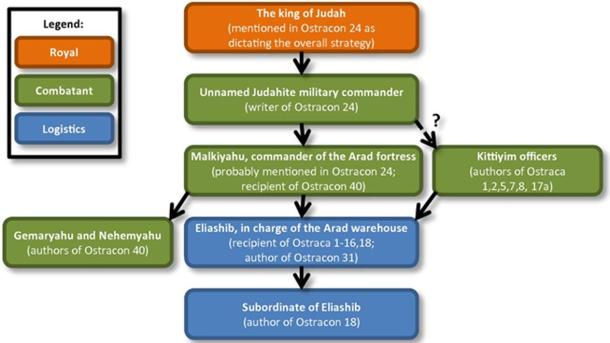
Analysis Shows that the Hebrew Bible May Be Centuries Older than Once Thought
New research may change to the early history of Christianity and Judaism. Researchers from Tel Aviv University believe that a discovery from Arad proves that the Hebrew Bible was written much earlier than thought. Their research also suggests a surprisingly high level of literacy in the Kingdom of Judah circa 600 BC.
The results of an algorithmic handwriting analysis presented by researchers in PNAS suggests that the Hebrew Bible was composed before the historical destruction of the Kingdom of Judah and Jerusalem in 586 BC. The researchers say that the shards discovered at a frontier fort in Arad, Israel date back to around the 7th century BC and were written by at least six different people. LiveScience reports that the discovery has started a discussion regarding the timing of the composition of a critical mass of biblical texts.
The use of cutting-edge computerized image processing and machine learning tools allowed the researchers to analyze 16 ink inscriptions unearthed at an excavation in the remote fort of Arad. The researchers designed an algorithm to distinguish between different authors, then composed a statistical mechanism to assess the findings, and in the end they eliminated the probability that the texts were written by a single author.

Ostraca (ink inscriptions on clay) from the Iron Age fortress of Arad, located in arid southern Judah. (Michael Cordonsky, Tel Aviv University and the Israel Antiquities Authority)
The group of researchers is led by Professor Israel Finkelstein of Tel Aviv University's Department of Archaeology and Ancient Near Eastern Civilizations and Professor Eliezer Piasetzky of Tel Aviv University’s School of Physics and Astronomy. Professor Finkelstein believes that the answer to this problem lies in the questions '' What were the literacy rates in Judah at the end of the First Temple period? And what were the literacy rates later on, under Persian rule?”
- Oldest Known Draft of the King James Bible Discovered in Cambridge
- Does latest dating of camel bones reveal inaccuracy in the Bible?
According to the researchers, an abundance of literate individuals in Judah may have set the stage for the compilation of biblical works that constitute the basis of Judahite history and theology, such as the early version of the books of Deuteronomy to Second Kings. As Professor Finkelstein said:
“Adding what we know about Arad to other forts and administrative localities across ancient Judah, we can estimate that many people could read and write during the last phase of the First Temple period. We assume that in a kingdom of some 100,000 people, at least several hundred were literate. Following the fall of Judah, there was a large gap in production of Hebrew inscriptions until the second century BCE, the next period with evidence for widespread literacy. This reduces the odds for a compilation of substantial Biblical literature in Jerusalem between ca. 586 and 200 BCE.''
Moreover, Professor Piasetzky believes that they've found indirect evidence of the existence of an educational infrastructure, which could have enabled the composition of biblical texts. The inscriptions discovered in Arad contained instructions for troop movements and the registration of expenses for food. This suggests that literacy existed at all levels of the administrative, military, and priestly systems of Judah.

Reconstruction of the hierarchical relations between authors and recipients in the examined Arad inscriptions; also indicated is the differentiation between combatant and logistics officials. (Shira Faigenbaum-Golovin et al.)
The next steps for the team from Tel Aviv University will be to extrapolate from Arad to a broader area. The knowledge of the skills of reading and writing, which were not limited to a tiny elite, but were quite common, may be the key to the greatest secret of the Bible.
- Secret Notes Found Hidden in a Bible Reveal Unexpected Details on the Reformation of Henry VIII
- Codex Gigas (the Devil’s Bible) - the largest manuscript in the world
This is not the first time when the dating of the Bible is questioned. One of the most important discoveries related to that was made in 1947. The Dead Sea Scrolls gave a new light on the composition of the Bible. The materials discovered in Qumran are dated back to the Hasmonean (152-63 BC) and early Roman periods (63BC-68 AD).

A photograph of the War Scroll. (Public Domain)
Nowadays, scholars agree that the text may be even older than people used to believe. Due to the comparison of the composition, it is known that the writers who created the Bible described events from times before the birth of Jesus. One good example is the earthquake reported by the first-century Jewish historian, Josephus. The catastrophe apparently took place circa 31 BC, but according to the scrolls, it happened in the writer's lifetime.
Featured Image: Ostraca from Arad numbers 24, 5, and 40. The poor state of preservation, including stains, erased characters, and blurred text, is evident. Source: Institute of Archaeology, Tel Aviv University, and of the Israel Antiquities Authority














